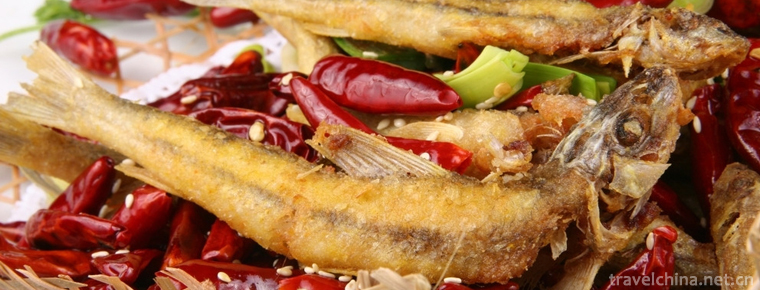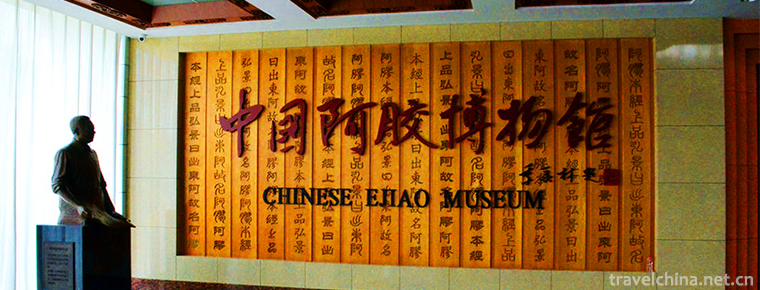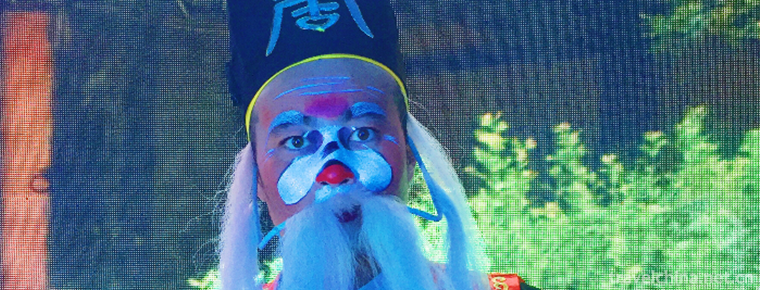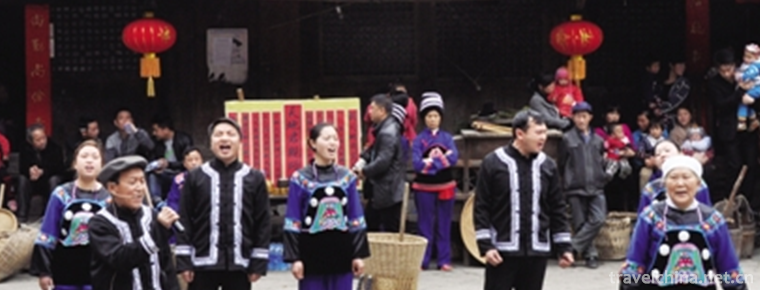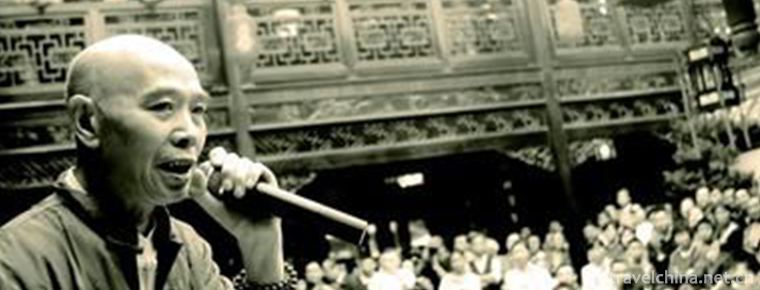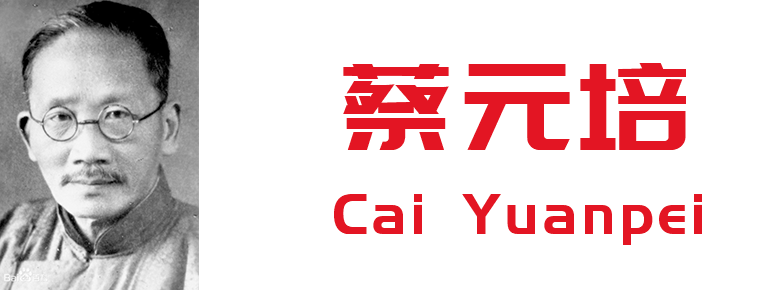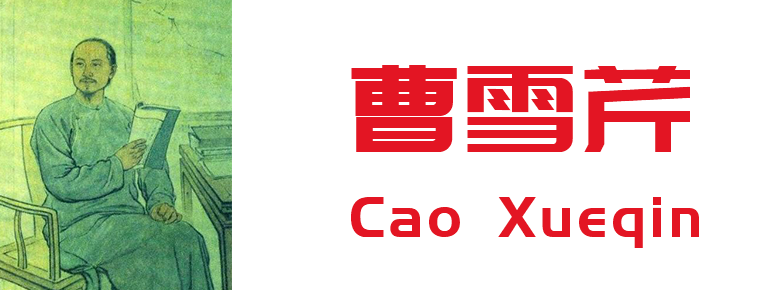Han music in Guangdong
Han music in Guangdong
Guangdong Han music is an ancient music of the Central Plains brought about by Hakka ancestors when they moved southward more than 1,000 years ago. It has evolved from generation to generation and has become one of the three major types of music in Guangdong based on the integration of local folk music (such as playing eight tones and Chinese military class music). "Zhongzhou Ancient Tune" and "Hangao Old Music Score" are old music scores handed down from generation to generation. Guangdong Hakka music generally includes five categories: silk string music (formerly Confucian or Qingyue), Chinese military class music, eight tones, folk gongs and drums, and temple music. It is widely spread in Meizhou, Shenzhen, Shaoguan, Huiyang, Fujian, Fujian, Jiangxi, Gannan, Taiwan and other Hakka areas and overseas Chinese, among which Meizhou, known as the hometown of Guangdong Hanyu, is also the representative. Meizhou Guangdong Han Music Association and Hadu Women's Guangdong Han Music Orchestra are the main institutions for the inheritance of Han music.
In 2004, Dapu County of Meizhou City was officially awarded the honorary title of "Hanle Town" by Guangdong Provincial Culture Department. In June 2006, it was listed in the first batch of national intangible cultural heritage list.
In 2010, in 2011, Guangdong Han music performances appeared successively in Guangzhou Asian Games and Shenzhen Universiade, so that the general public can appreciate the artistic style of ancient Guangdong Han music.
In October 2012, at the finals of the 2012 CCTV National Instrumental Music Television Competition, the Guangdong Han Theatre Orchestra, composed of nine musicians from the Guangdong Han Theatre, won the first place in the traditional folk music group with a Guangdong Han Music "Cuizi Dengtan". The charming style of Zhongzhou ancient music instantly shined in front of the capital and millions of audiences throughout the country.
Brief introduction of Chinese music
In the long-term spread, Han music has had a variety of appellations. Such as "national music", "Zhongzhou ancient rhyme", "Hakka music", "Waijiang string", "Han tune music", "gong advocacy", "playing eight tones" and so on. For the sake of authenticity, the first Yangcheng Concert in 1962 was formally named "Guangdong Han Music" after many musicians'discussions.
The simple, elegant and graceful music of the Han Dynasty in Guangdong, Fujian, Taiwan and other provinces and Southeast Asian Chinese are widely spread. Guangdong Han Music, Guangdong Music and Chaozhou Music are known as the three major types of music in Lingnan, each of which has its own infinite artistic charm and special style and has been handed down from generation to generation, enduring and enjoying a good reputation at home and abroad.
Inheritance significance
basic feature
After hundreds of years of development, Guangdong Han music has formed the following basic characteristics:
1. The inheritance is clear and there are many representatives in each period. Such as Luo Shuyu in Ming and Qing Dynasties, Yang Qilie in Ming Dynasty in Qianlong in Qing Dynasty in 3 years, Yang Tianpei in Qianlong in 13 years, Zhang Zhennan in Xianfeng in 2 years, Rao Jungu in Chayang Xiuchi, Xiucai in Late Qing Dynasty, and so on; He Yuzhai, Rao Shushu, Rao Congju, Rao Bichu, Li Lantian, Li Zhitian, Luo Jiuxiang and Luo Niang De in the period of the Republic of China; after the founding of the People's Republic of China, Li Deli, Luo Lian, Luo Lian, Luo Lian, Dunchang, Rao Ningxin, Luo Dezhuang, Zhang Gaowan, Luo Zengliang, Luo Zengyou, Luo Banglong, Yang Peiliu, Fan Shenghua, Zhuangchang, etc. At present, there are Rao Baoyou, Wen Ziqin, Liao Dongxiong, Liu Chuanhe and so on.
2. There are many kinds and repertoires. According to the collected and published Chinese music anthology, there are 612 pieces of Han music, including 430 pieces of silk string music (including minor), 56 pieces of Qing music, 23 pieces of Han music gongs and drums, 62 pieces of Chinese military class music and 31 pieces of temple music.
3. Diversity of performance forms and techniques. The performance of Han music has one solo, two or three accompaniments, but more forms of accompaniment, so its performance skills.
Qiao is rich. Take the ensemble for example, there are such procedures as choosing instruments, auditing sounds, testing lines, prelude and ensemble. At the same time, we should pay attention to concentration and appropriate environment. In addition, the performing skills of Han music include tone variation, adding flowers and subtracting characters.
4. Literary compatibility. The tune of Guangdong Han music contains rich literariness, the pitch of the music is high and low, the length is short and urgent, the structure of the beginning and the end, echoes the ups and downs, and contains a deep literary connotation. It can be divided into four literary genres:
One is the style of Ci and qu. The tune of this genre is divided into two parts: the front and the back parts are not equal in number, but the tune of the phrase is quite similar, such as General's Order and Xiaoyangzhou, etc.
Second, the style of wind poetry. Each piece of music in this genre is divided into four or five or seven or eight paragraphs. There are two or three sentences in each paragraph. Although the other paragraphs are different, their first or last sentences are basically the same. This kind of tune can be represented by Yulian Link.
Third, the style of Sao Fu. This genre has many dual sentences with scattered sentences, which are similar to Lisao, Return and Return Lyrics, Chibi Fu, and so on. It is similar to that of Sanchu Ci.
Fourth, prose style. This kind of music, or dual sentences, or overlapping sentences, is more complex and changeable. For example, the first paragraph of Pingshan Music is composed of a couplet sentence and a repetition sentence, while the middle paragraph is composed of a single sentence, and then two couples are used. The last paragraph is used to turn the repetition sentence, and the single sentence is closed, one bunch after another. Its style is the most neat.
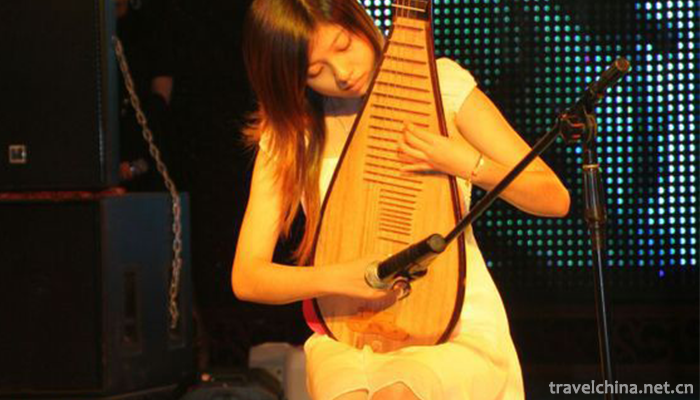
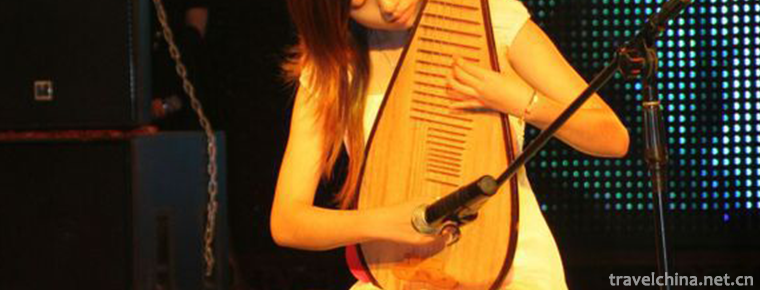
Han music in Guangdong
-
Dali arched fish
Dali aToxoplasmus dali, commonly known as fine-scaled fish
Views: 265 Time 2018-10-17 -
China Ejiao Museum
China Ejiao Museum, built in 2002, is located at the foot of Mount Tai, east of Donga County on the Bank of the Yellow River. It is funded by Donga Jiao Group, the largest Ejiao production enterprise
Views: 164 Time 2018-12-22 -
Hukou Waterfall
Hukou Waterfall is a national scenic spot and a national AAAA scenic spot. Hukou Township, Yichuan County, Yan'an City, Shaanxi Province in the west, and Hukou Town, Jixian County,
Views: 172 Time 2019-01-16 -
Eyebrow household
Eyebrow households, distributed in Shanxi, Shanxi, Shaanxi, Gansu, Western Henan and other provinces, also known as "Eyebrow Shao" or "confusion", are named for their euphemistic m
Views: 106 Time 2019-05-31 -
Nanxi chant
Nanxi chant is popular in Qianjiang District of Chongqing City. Its origin can be traced back to Tang Dynasty. Its embryonic form is Tujia peasants'work chant and folk song chant, which are similar to
Views: 130 Time 2019-06-07 -
Sichuan Book Review
Sichuan commentary, also known as vernacular speech and commentary, is one of the traditional operas in Sichuan Province. It is popular in all parts of Sichuan and Yunnan and Guizhou. The performers t
Views: 148 Time 2019-06-16 -
Cai Yuanpei
Cai Yuanpei (January 11, 1868 - March 5, 1940), word crane Qing, also the word Zhong Shen Cai Zhen, Zhou Ziyu, Han nationality, Shanyin County, Shaoxing Prefecture, Zhejiang (now Zhejiang). Shaoxing (
Views: 211 Time 2019-09-06 -
Cao Xueqin
Cao Xueqin (about May 28, 1715 - February 12, 1763) Name Stained with Word Dream Ruan No. Xue Qin No. 2, Qin Xi and celery, Chinese classic. The Dream of Red Mansion The author of the book is controve
Views: 255 Time 2019-09-07 -
Wawu mountain
Wawu Mountain National Forest Park is under the administration of Hongya County, Meishan City, along the western edge of Sichuan Basin. It is 180 km away from Chengdu and covers an area of 1.05 million mu.
Views: 328 Time 2020-10-15 -
Bijia mountain Luzhou City Sichuan Province
Bijia mountain is located in Hejiang County, Luzhou City, Sichuan Province, 42km away from Luzhou City and 7km away from Hejiang county. Bijia mountain is named for its three peaks standing like a penholder. Bijia mountain area is dangerous, surrounded by cliffs and cliffs. The mountain has the characteristics of typical red Danxia landform, unique landscape and beautiful scenery.
Views: 184 Time 2020-10-16 -
The tertiary industry of Panzhihua
In 2018, the total retail sales of consumer goods in Panzhihua reached 36.126 billion yuan, an increase of 10.8%. In terms of business location, the retail sales of consumer goods in urban areas were 33.036 billion yuan, an increase of 10.7%; the retail sales of consumer goods
Views: 226 Time 2020-12-14 -
Guangan science and technology
In 2019, 16 new high-tech enterprises will be cultivated in Guang'an City, 107 of which will be put on record by the Ministry of science and technology. One provincial high-tech industrial park, one provincial engineering technology research center and two
Views: 359 Time 2020-12-19
